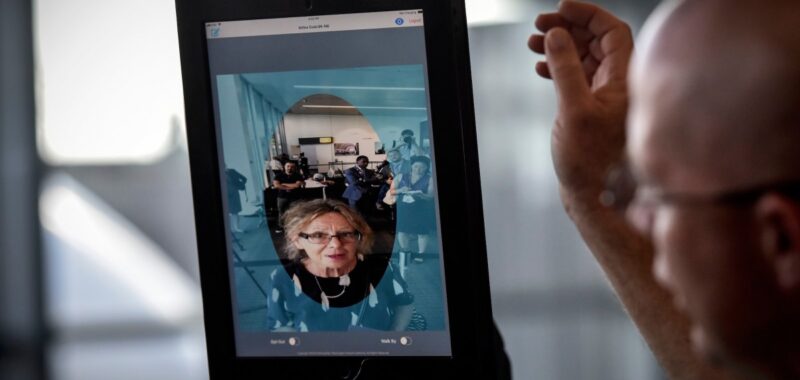U.S. airports are rolling out facial recognition technology to scan the faces of travelers before they board their flight. Americans, at least, get to opt out.
More than 230 U.S. airports have already rolled out facial recognition technology, according to the website of U.S. Customs and Border Protection (CBP), the federal agency tasked with border security.
On one hand, the government claims that facial recognition reduces paper tickets and that it can be more efficient for travelers. But facial recognition remains imperfect and controversial. Technical problems and reliability issues plagued the initial rollout of airport facial recognition, and independent testing called into question the efficacy of facial recognition algorithms that performed less well on nonwhite faces.
There are also privacy and legal concerns. After all, it’s not CBP collecting your facial recognition data directly, but the airlines themselves.
Delta began scanning the faces of departing passengers beginning in 2018. JetBlue and others soon followed suit. While the airlines collect face scans to verify travelers as they board their flights, the face scans are passed to the government to check passengers against watchlists, such as those who overstay their visas.
The government can hold onto these photos from anywhere between a few hours to several decades, depending on whether you’re a citizen or not. The data is also stored in several government databases, which border agents can pull up when you’re arriving or leaving the United States.
If you’re an American, however, opting out is easy, and it’s your right.

You may see signs around an airport that says you can opt out of facial recognition, but note that there may be no signs at all or signs that are hidden from view.
Regardless, CBP’s own website makes clear that U.S. citizens can opt out of these face scan checks. “U.S. citizens who do not wish to submit to facial photo capture pursuant to these processes may request alternative processing, which typically involves a manual review of their travel documents by a [border agent].”
You may also have to opt out multiple times from arriving at the airport until you reach your airplane seat.
Only U.S. citizens and U.S. permanent residents (known as green card holders) can opt out of facial recognition on departing international flights. Anyone, regardless of their citizenship, can opt out of facial recognition for domestic U.S. flights.
Opting out works by notifying an officer or airline employee at the time of a facial recognition scan. Border agents or airline staff will manually check your passport and boarding pass, in the same way that would have happened prior to the facial recognition system coming into effect.
If you’re not a U.S. citizen or permanent resident, you cannot opt out of facial recognition. There are a few exceptions, such as Canadian citizens who don’t require a visa to enter the United States, and overseas diplomatic visa holders. For Americans (and permanent residents), opting out is your right, even if it is not always clear or obvious based on what you see in the airport.
As the digital rights group the Electronic Frontier Foundation says: “It might sound trite, but right now, the key to opting out of face recognition is to be vigilant.”
Read more:
First published on May 13, 2019 and updated July 29, 2024.

